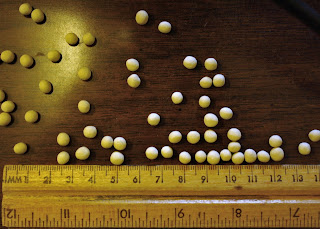It’s about time to find something
interesting from the collection room again!
Let’s take a look at a patent model of a
mattress. Due to the large number of
sick and wounded soldiers in the Civil War, demand for hospital beds and
mattresses increased. Usually where
there is demand, there are people willing to produce the supplies for it, and this
leads us to today’s artifact.
 |
| Here is a diagram of the mattress which was part of the patent application for a new kind of mattress stuffing, invented by A.C. Crondal of New York. |
At the time of the Civil War, applications
for patents were required to be accompanied by a sample, usually a small
working model, of the item. Over time
this became problematic for the government, as all the patent models submitted
to them took up a lot of storage space!
The requirement for these models was eventually dropped. Now, though, these patent models are in
demand as collectibles.
 |
| This is the patent model submitted by A.C. Crondal. It measures just 11 ½ inches long and 5 inches high. Notice that the original patent office label is still attached to it which indicates that Mr. Crondal’s patent was granted on September 22, 1863 and was patent number 40,024. |
Also notice in the photograph above that
the patent office label is attached to the model with a piece of red ribbon,
also referred to as tape. This tape is
the origin of the of the expression “red tape” which is often associated with
government bureaucracy!
A letter was also a required part of the
patent application. The one for this
mattress sample starts:
"Be it known that I, A.C.
Crondal, of the city, county, and State of New York have invented a new and
Improved Cork Stuffing for Mattresses, Pillows, &c.; and I do hereby
declare that the following is a full, clear, and exact description of the same,
reference being had to the accompany drawings, forming a part of this
specification...."
He proceeds to describe the methods he
used to grind and sift the cork granules, the manner in which the linseed oil
was applied to the granules, and how these granules could be used.
“For mattresses and similar
articles - such as the seats and backs of sofas, chairs, &c. - I use the
coarse granules, and the fine granules
I apply for stuffing pillows and all classes of soft cushions."
 |
| The bottle contains a sample of the oiled cork stuffing Mr. Crondal wanted to patent, and was submitted to the patent office along with the model of the mattress. |
He then goes on to describe why his
invention would be good for use in hospitals and ambulances:
"By these means I have
succeeded to render the use of cork; practicable for stuffing mattresses,
&c., being without doubt the healthiest material for upholstering, because
it does not attract or absorb moisture, it does not suffer vermin, and it is
cool and elastic. A mattress stuffed
with cork, according to my method, therefore is of the greatest advantage for
patients in hospitals and ambulances, and for sick persons in general, and there
is no danger of the destruction of the cellular texture of the skin or
mortification usually arising from the secretions passing into the mattress and
rendering the same moist, hard, and uneven.
The cork prepared according to my invention remains dry and even, and
patients lying on one of my mattresses have never to be moved out of bed.
By reason of its lightness,
cheapness, and portability my mattress is also of great advantage on board of
vessels, and in this case it may serve at the same time as a life
preserver."
The following year, Mr. Crondal applied
for a patent of a folding bedstead, which can be seen here.
I suspect that he intended for his mattresses to be used on these beds!
Photos courtesy of the National
Museum of Civil War Medicine.







































